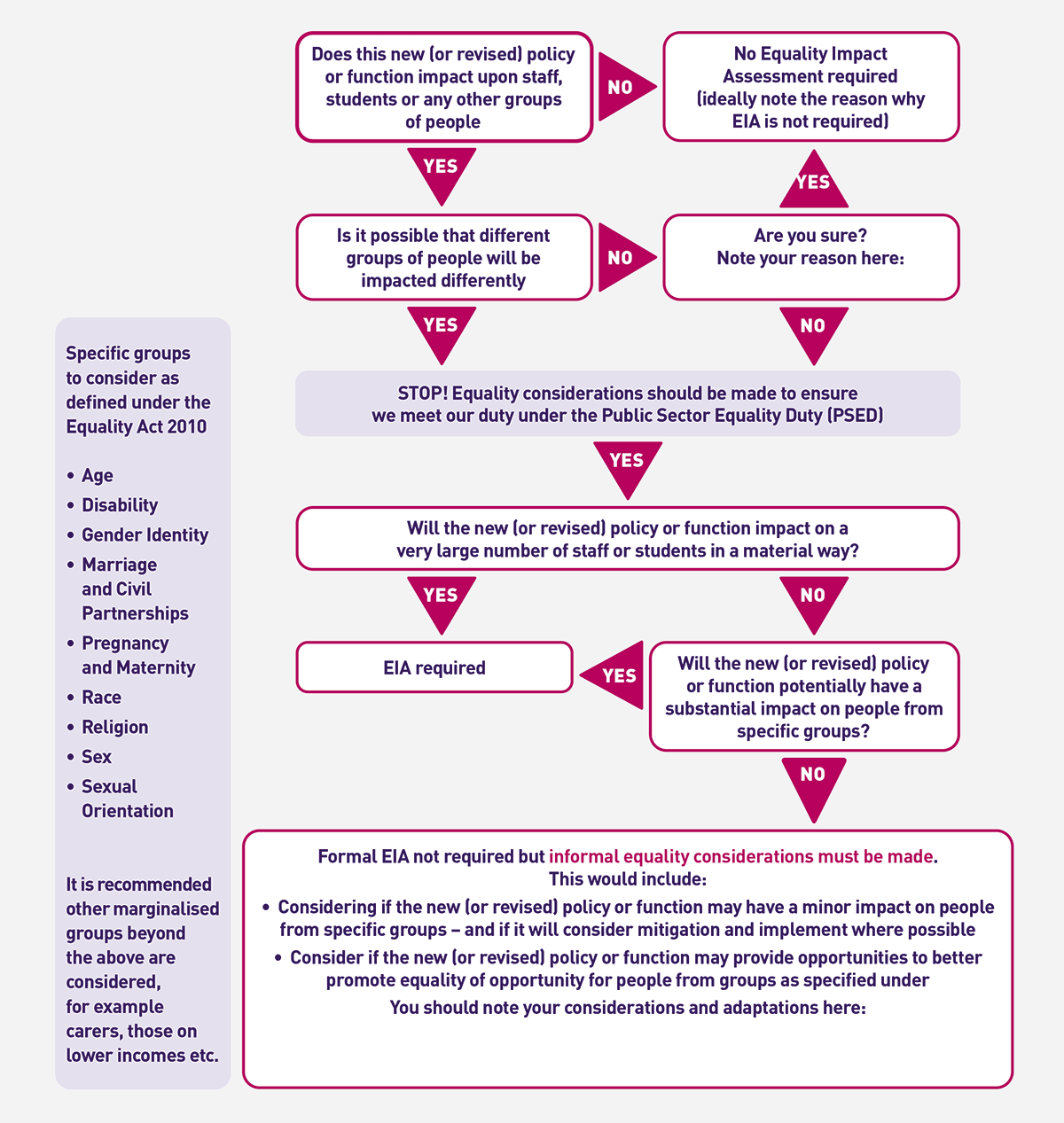Scope and Boundaries
Every substantial activity (for example policies, major procedures and larger projects, including removal of services) should be examined in relation to its impact on equality. Not all activities warrant the same level of detail, and some will clearly have higher priority or risk than others.
Proportionality should however be considered. For example, it may not be necessary to conduct an EIA on individual elements of work being delivered to deliver a policy/activity, where an EIA has been conducted on the overall policy/activity. The number of people that will be affected, and the intended impact of the work should be considered when deciding whether to conduct an EIA.
The greater the potential adverse impact of the proposed service, policy, strategy, practice, or plan on a protected group and/or the more vulnerable the group in the context being considered, the more thorough and demanding the process of an Equality Impact Assessment required by the Act will be.

If you are unsure on the need to complete and EIA, guidance can be sought from one of the following as appropriate
- HR - HR@lboro.ac.uk
- EDI Services - EDI@lboro.ac.uk
- How to complete an EIA (updated guidance)
It is not necessary for an EIA to be completed where the area of work under consideration will not have an impact on staff, students or other stakeholders. Where it is considered that no EIA is required, the evidence-based rationale should be recorded and logged.
Completion of the EIA pro-forma will provide an audit trail of how Loughborough University has met its legal obligations.
Timing
An EIA of a new activity should always start as early in the planning and development process as possible. This helps to ensure that there is adequate time to make adjustments identified in the EIA, and often draws in elements such as user consultation that would happen anyway.
Ongoing activities (for example, established policies) should undergo an EIA as they come up for review.